These large and boldly patterned bees are cleptoparasites, primarily of Long-horned Bees. 6 species are known from Vermont, but most have fewer than 5 records. A few of the rarest species are easily identifiable from photos.
Genus level ID – These black and white bees form a distinct group with Cellophane-cuckoo Bees (Genus Epeolus). Some species in both genera are distinctive, but other individuals are hard to assign to genus from photos. Long-horn Cuckoo Bees tend to be larger, but again there is some overlap.
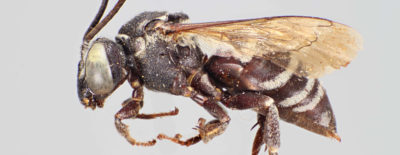
Thistle Longhorn-Cuckoo (Triepeolus donatus)
Scattered records. A parasite of the Thistle Long-horned Bee.
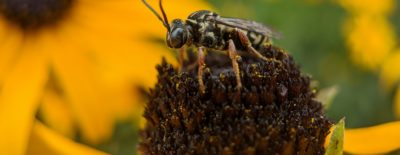
Goldenrod Longhorn-Cuckoo Bee (Triepeolus pectoralis)
Locally common. Likely a parasite of Drury's Long-horned Bee.
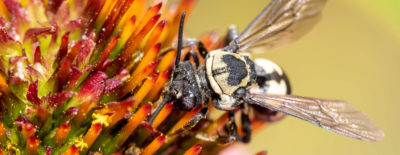
Squash Longhorn-Cuckoo (Triepeolus remigatus)
Only a few records. A parasite of the Pruinose Squash Bee.
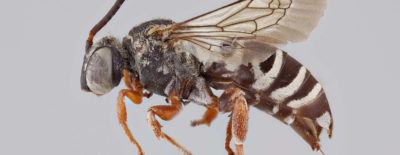
Michigan Cuckoo Nomad Bee (Triepeolus michiganensis)
A northern species
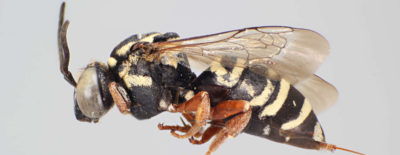
Sunflower Cuckoo Nomad Bee (Triepeolus helianthi)
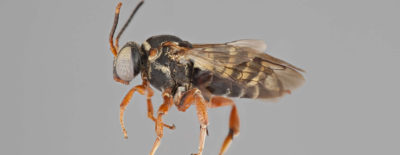
Lunate Longhorn-Cuckoo (Triepeolus lunatus)
Not yet documented in VT, but its host - the Two-spotted Long-horned Bee is abundant in parts of the Champlain Valley.
Unless otherwise specified, photos are courtesy of Margarita Miklasevskaja at PCYU with funding from NSERC-CANPOLIN.






